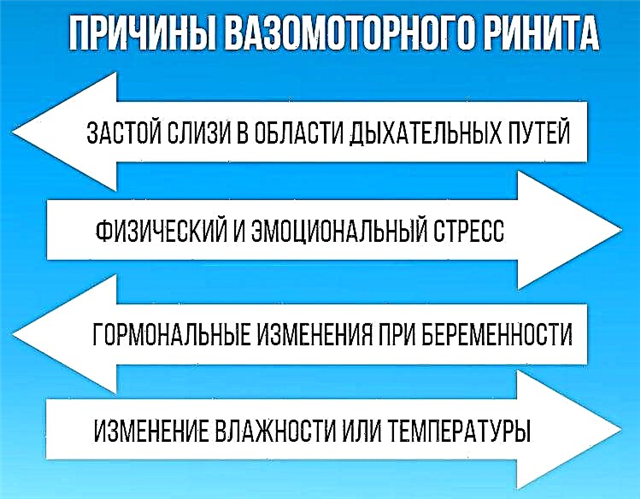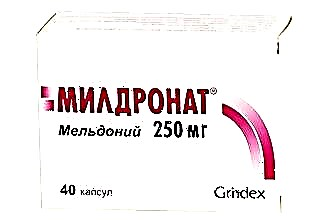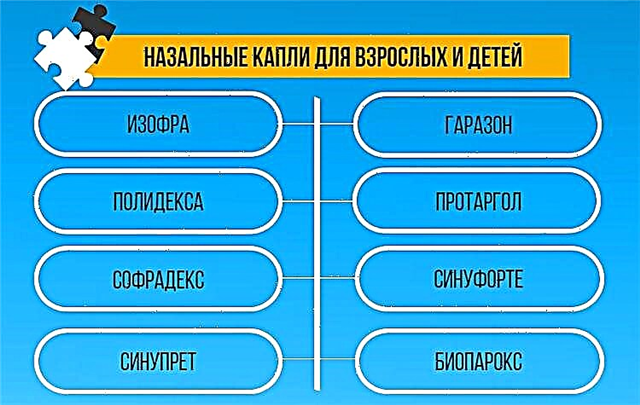After allergens enter the human body, a specific reaction of the body can develop, which often manifests itself in the form of a rash, sneezing, lacrimation, itching, edema. The most dangerous response of the body to the penetration of a foreign substance is allergic laryngeal edema. The danger of this symptom lies in its rapid development, therefore, in order to save a person's life, it is necessary to know the main signs of the disease and be able to provide first aid in a timely manner.
Causes
Throat swelling with allergies cannot be considered a separate disease.  This pathology most often manifests itself as a symptom of serious diseases, as well as as a result of an allergic reaction of the body to an external stimulus. Allergic throat swelling most often occurs in childhood. Because the larynx is shorter in children than in adults, edema can be more serious and requires urgent medical attention to avoid suffocation.
This pathology most often manifests itself as a symptom of serious diseases, as well as as a result of an allergic reaction of the body to an external stimulus. Allergic throat swelling most often occurs in childhood. Because the larynx is shorter in children than in adults, edema can be more serious and requires urgent medical attention to avoid suffocation.
An allergic reaction can be caused by:
- strong dustiness of the room;
- pollen of plants;
- pet hair;
- some food and drinks;
- harsh chemical odors;
- medications;
- insect bites.
Important! According to medical statistics, most often, laryngeal edema with allergies occurs after eating peanuts, bee products, citrus fruits, and fish dishes.
At the first signs of allergy development, you should seek the advice of an allergist, who will help not only find out the cause of the disease and prescribe effective therapy, but also recommend the means necessary to provide emergency assistance in the event of laryngeal edema. Often, it is the patient's good knowledge of the possible condition, the main signs of the development of the disease and the methods of first aid that allows you to save life.
Symptoms
Allergens can enter the body in different ways, penetrating through the skin, the mucous membrane of the gastrointestinal tract and the organs of the nasopharynx. Usually, the first symptoms of throat tightness occur immediately after the allergen penetrates. The more pronounced the symptoms, the faster the process of narrowing the lumen in the larynx occurs.
Signs of puffiness are distinguished depending on the stage of the disease. So, in the early stages of an allergic reaction, laryngeal edema can be confused with a common cold, because the pathology is accompanied by rhinitis, sneezing, sensation of a foreign object in the throat, sore throat, soreness when swallowing. However, in addition to these reasons, other manifestations of a viral infection, such as body aches, chills, general weakness, are absent.
In the later stages, swelling is manifested by hoarseness, shortness of breath, dry cough, shortness of breath. The patient wants to breathe in more air, but deep breathing is painful. Due to the lack of oxygen, the skin turns pale, the patient experiences a panic fear of suffocation.
Important! The most dangerous stage of the disease is a state when breathing becomes shallow, the skin turns pale, the pupils dilate, the patient is in a fainting state.
Allergic laryngeal edema can be divided into several main types, depending on the location, causes and symptoms of the disease:
- allergic pharyngitis;
- allergic laryngitis;
- Quincke's edema;
- anaphylactic shock.
 With allergic pharyngitis, the nasopharyngeal mucosa becomes inflamed. The disease is accompanied by swelling of the uvula and mucous membrane of the posterior wall of the larynx, dryness in the nasopharynx, feeling of a foreign object, hoarseness, sharp painful sensations when swallowing. Most often, allergic pharyngitis manifests itself against the background of inhalation of strong chemical odors.
With allergic pharyngitis, the nasopharyngeal mucosa becomes inflamed. The disease is accompanied by swelling of the uvula and mucous membrane of the posterior wall of the larynx, dryness in the nasopharynx, feeling of a foreign object, hoarseness, sharp painful sensations when swallowing. Most often, allergic pharyngitis manifests itself against the background of inhalation of strong chemical odors.
With allergic laryngitis, swelling of the entire surface of the larynx occurs. In this case, the patient has difficulty breathing. Also, this type of allergy is characterized by symptoms such as a dry cough, similar to barking, numbness of the lips and in the area of the nasolabial fold. There are many reasons for allergic rhinitis:
- infectious diseases;
- Food;
- dust;
- medications.
Quincke's edema occurs unexpectedly, affecting the nasopharyngeal mucosa. In this situation, the eyelids, lips, oral mucosa, and respiratory tract swell.
If timely assistance is not provided for Quincke's edema, oxygen deprivation (asphyxia) often develops. The patient has difficulty breathing, the tongue turns blue, the person can speak exclusively in a whisper.
Anaphylactic shock develops immediately after contact of the body with an allergen. Most often, this condition occurs after the use of drugs, to which a person has an individual intolerance. More than a quarter of all cases of anaphylactic shock are fatal due to suffocation.
After a dangerous substance enters the body, an allergic reaction begins to develop: pronounced swelling, swelling appears, the site of administration of the drug or bite turns red, begins to itch. In the process of progression of symptoms, which occurs in a period from a few minutes to several hours, itching spreads throughout the body, the patient's blood pressure drops, throat swelling develops, and as a result hypoxia. The skin becomes pale, and the limbs become bluish.
If anaphylactic shock has developed against the background of food allergies, then in this case pain occurs in the stomach area, nausea, vomiting, indigestion, and swelling of the nasopharyngeal mucosa appear.
First aid
If swelling of the pharynx develops, it is necessary to take the right measures immediately. The first thing to do is try to identify and eliminate the cause of the allergic reaction.
So, if the cause is dusty air in the room or strong chemical odors, it is necessary to take the person to fresh air.
If a food allergy has developed, gastric lavage should be performed and a sorbent should be given to the patient, for example, activated carbon, Enterosgel, Smecta, Atoxil and similar drugs.
If an allergy has arisen as a result of an insect bite, you need to remove the sting, squeeze out the poison, apply a tourniquet above the bite site.
After that, it is necessary to provide first aid to the victim, aimed at relieving swelling of the nasopharynx and restoring breathing. In this case, fast-acting antiallergic drugs are used, for example, Suprastin, as well as hormone-containing drugs, such as Prednisolone or Dexamethasone. Drug treatment should be started at the first signs of an allergic reaction in order to avoid further development of pathology.
There are several ways to provide first aid for allergies:
- drinking plenty of fluids to remove toxins from the body;
- local exposure to cold on the throat area (hot water bottle with ice, a towel soaked in ice water) to reduce swelling and prevent suffocation;
- lay the victim on a flat surface and slightly raise his legs, for example, placing a pillow under them;
- release the throat area (open the collar, remove the scarf), providing unhindered access to oxygen;
- drip into the nose vasoconstrictor drops to which the patient is not allergic.
Treatment
After the patient has received emergency care, he should be hospitalized, since in such situations, treatment in a hospital setting is often required, especially when a child falls ill. After the initial examination, the specialist will be able to prescribe the necessary treatment. Standard therapy for edema caused by allergies includes a set of measures aimed at:
- complete normalization of the respiratory process, which is achieved by using more powerful antihistamines;
- elimination of the likelihood of developing a bacterial infection using antibiotics;
- detoxification and dehydration of the body by parenteral administration of glucose solutions, vitamins, calcium gluconate and other drugs to maintain the main systems of life.
Important! In severe cases, when drug therapy is ineffective, they resort to procedures such as intubation or tracheotomy, which should be performed exclusively in a hospital setting.
If conservative methods of treatment, as well as nasotracheal intubation, did not bring the desired result and the laryngeal edema was not eliminated, the patient is subjected to surgical intervention - tracheotomy. In this case, to restore normal breathing, a small incision is made in the throat, which is located below the area of edema formation, where a special hollow tube - a cannula - is inserted.



